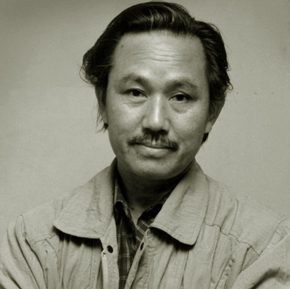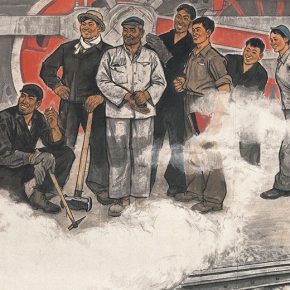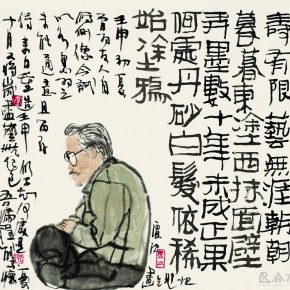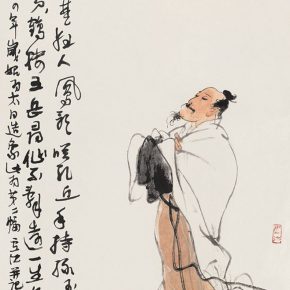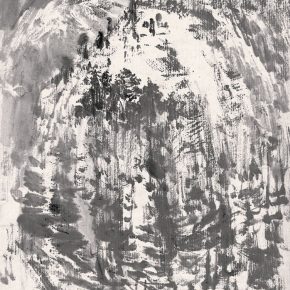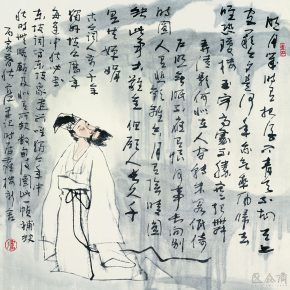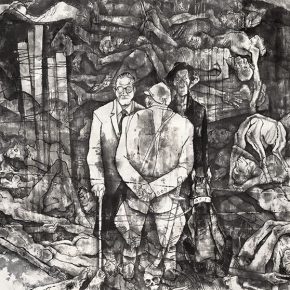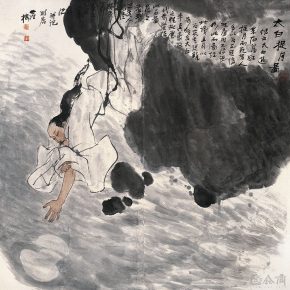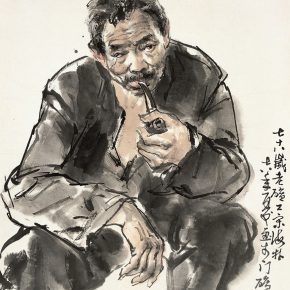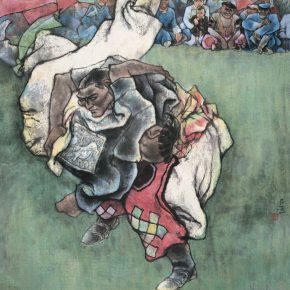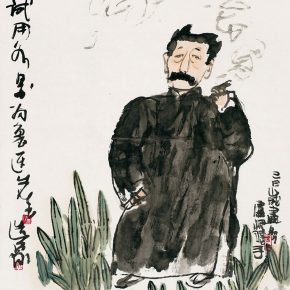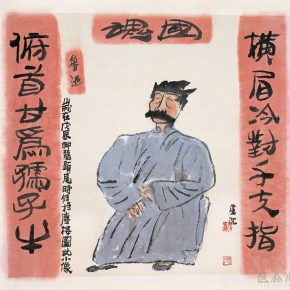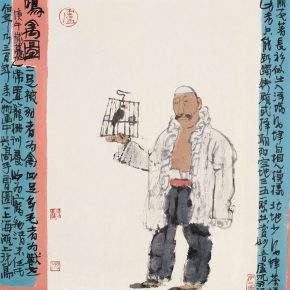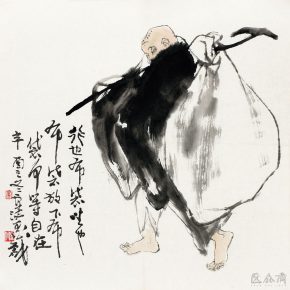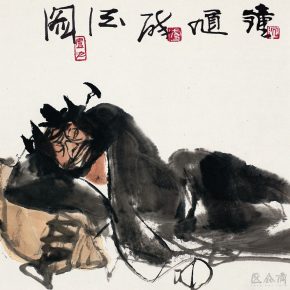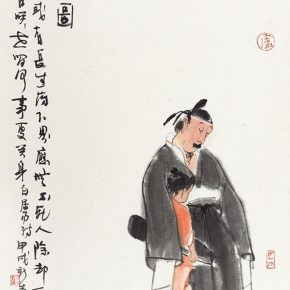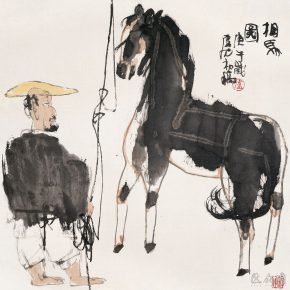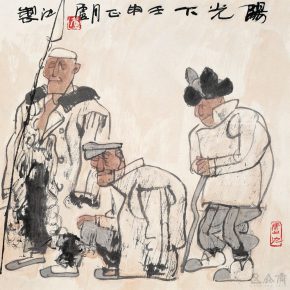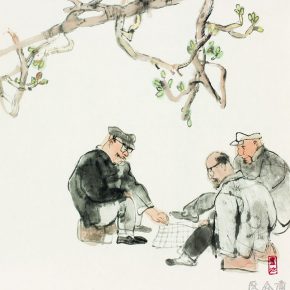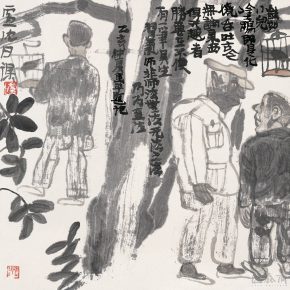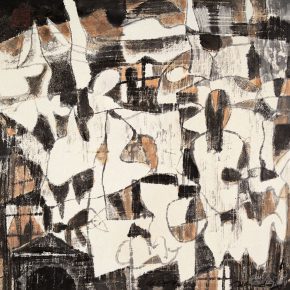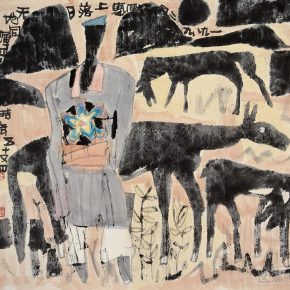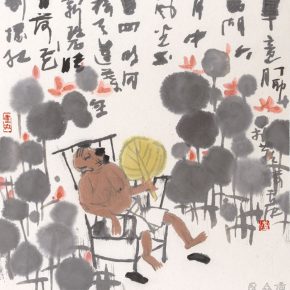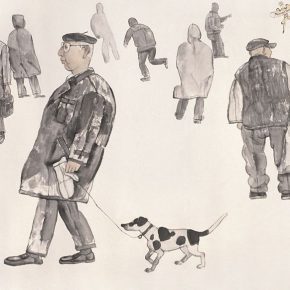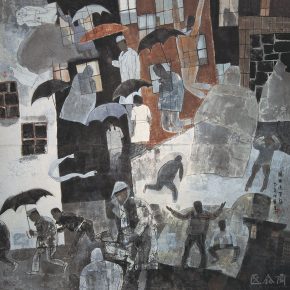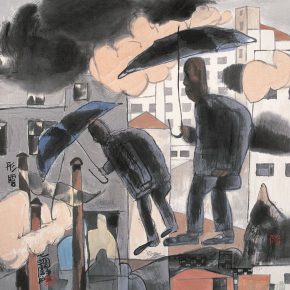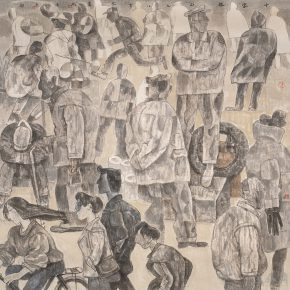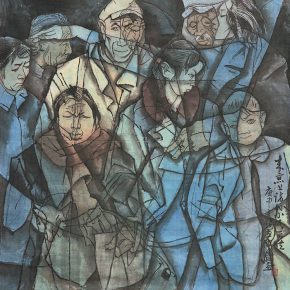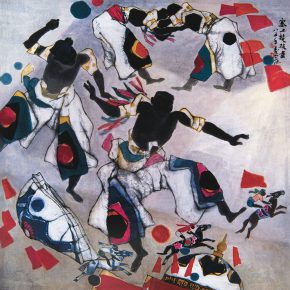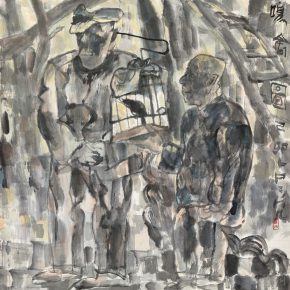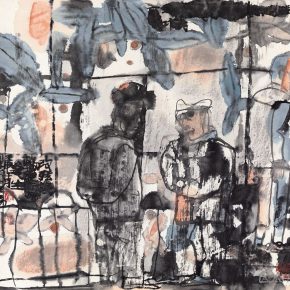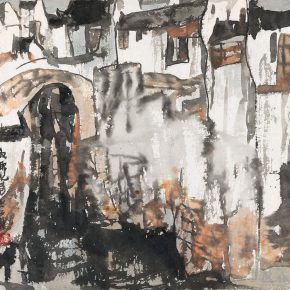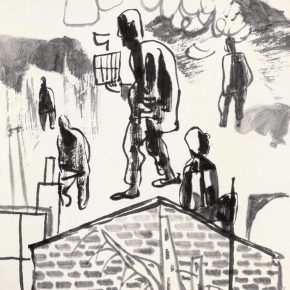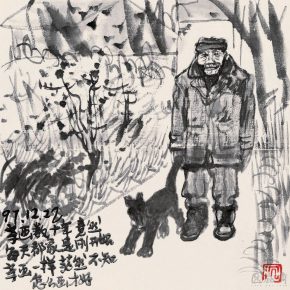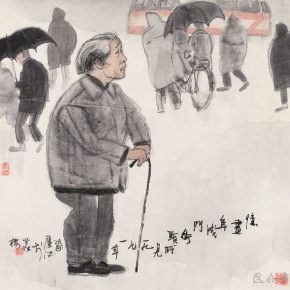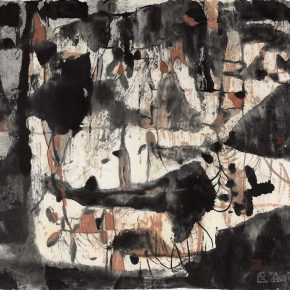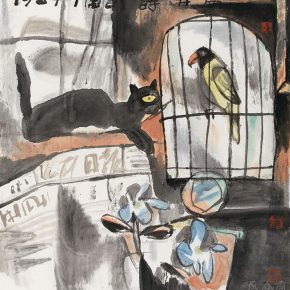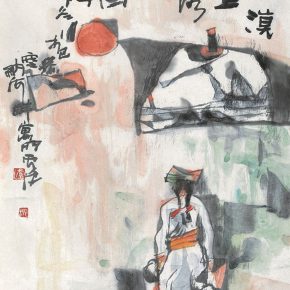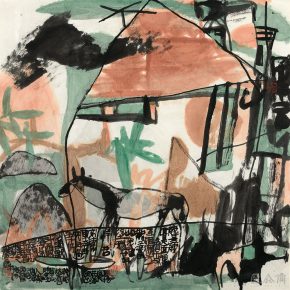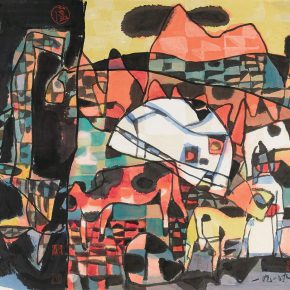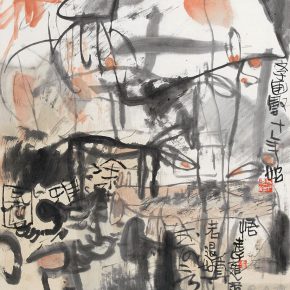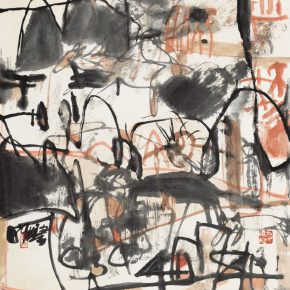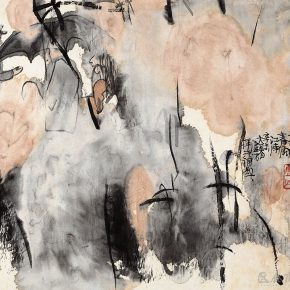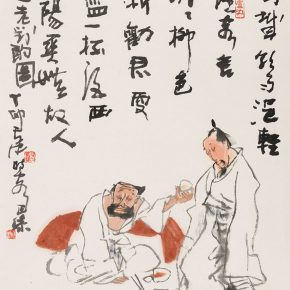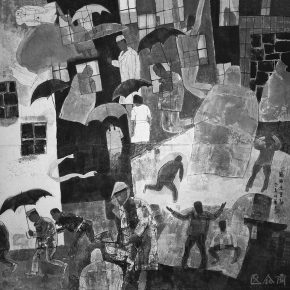Lu Chen

Chinese painter and art educator Lu Chen is good at figure painting in ink and wash, as well as Chinese calligraphy. He came from Suzhou, Jiangsu Province, he studied at Suzhou Art School in 1951, and then was admitted to the Department of Chinese Painting, CAFA in 1953, learning from Ye Qianyu, Jiang Zhaohe, Li Keran and Liu Lingcang, after graduation he stayed in the school to teach. In 1987, invited by école nationale supérieure des beaux-arts de Paris, he went to France as an exchange teacher, to introduce Chinese ink painting, and launched Chinese calligraphy classes, which were highly praised by the teachers and students from the école nationale supérieure des beaux-arts de Paris. In the same year, the first studio of the Department of Chinese Painting established the course of “ink composition”, intended for the exploration of freehand brushwork with a modern aesthetic taste.
Lu Chen was a former professor of CAFA, a member of the standing committee of CAFA, he was appointed as an honorary professor of the China Academy of Art, the doctoral tutor of the Academy of Arts & Design, Tsinghua University, and a consultant in the art teaching and research office at Peking University. His representative works include “Locomotive Doctor”, “Li Bai Capturing the Moon”, “Night Moon on the Prairie”, “Su Dongpo’s Mid-Autumn Poetry”, etc., and his publications include “Lu Chen’s Ink Painting”, “On Ink Painting by Lu Chen”, “Emotions and Performance – Lu Chen” and so on.
“I always think that art standards should be multiple faceted and brush and ink is not the solo important thing that should give way to the overall artistic creation. My students basically have the same view, take Wang Yanping as an example, I think she has made a good job in this respect, and her complete feeling is close to the art in my imagination, although there are many problems, she fuses Chinese and Western art, never bluntly absorbing it, but I have never finished it, the middle-age painters who came from the realism or traditional background would be in the contradictory state of language, missing the connection when we start to look for the artistic form of modern transformation.”
– An Excerpt from “Interview with Lu Chen” by Lang Shaojun, a researcher at the China National Academy of Arts, on March 5, 2010
“His main academic opinion is to advocate to pay attention to modern influences in the deep fertile soil of traditional art, focusing on innovation. The so-called art draws attention to modern art while observing and studiying modern social life, modern people’s survival, psychological status and aesthetic tastes, widely absorbing international experiences of modern art as well as carrying forward the excellent tradition of Chinese painting. In the past few decades, especially in the past 20 years, he sought to find a new means of expanding the expression of Chinese painting language. He was trained with a strict realistic style in Chinese painting, and his skills in traditional ink were weak, so that he vigorously strengthened the study of traditional art, practiced calligraphy, striving to blend realistic shaping ability into the traditional freehand language system; at the same time, he attached importance to the modern Western creative achievements and was especially interested in the abstract and the composition, and he believed that some factors could be applied to the freehand style of Chinese painting, to strengthen the expressive force. This explorative process is hard and long, which means that he has to give up some of his fortes, to re-learn the thingsthat were originally strange to him, therefore, hewas often stuck in confusion and with a dilemma.”
– An excerpt from “Shao Dazhen: Lu Chen, History of Chinese Painting Will Never Forget You”, originally published in the Guangming Daily, on February 11, 2004
“Mr. Lu is like a torch: burning himself to illuminate for the others. He illuminated the students and spent a lot of energy on the cultivation of students, and even Zhou Sicong was nourished. He did his best to try to realize his artistic proposition, but unfortunately he did not finish it because of his sudden passing away, however in fact his students are his works?”
– An excerpt from “Wang Yanping: Mr. Lu Chen’s Reform of Basic Teaching –and On the Understanding of the Ink Composition” by Dr. Wang Yanping from CAFA, majored in Fine Arts, originally published in “Chinese Art”vol. 1, 2010
“As an artist with an active mind, Lu’s constant exploration of artistic creations have a far-reaching impact so far, while Lu had always attached great importance to the learning of Chinese tradition,he also had a very in-depth practical study and unique insight into traditional Chinese painting and calligraphy art, he created a large number of freehand figure paintings and calligraphy pieces. Between the inheritance and innovation, it showcases a deep ideological background and comprehensive cultural accomplishment and courage to explore the art.
As an art educator, Lu made great contribution to the teaching of Chinese painting. He proposed the reform of teaching of Chinese painting in the 1980s, advocated that Chinese painting centered on the shaping of a line, emphasizing the use of calligraphy in the painting, fighting against the teaching model that centered on the use of the shaping by blocks. He also blended the Western concept of composition into the teaching and training of Chinese painting, and set up a course in“Ink Composition”, training students’ capacity informal analysis and the construction of creation.”
– An excerpt from “Wang Mingming: Started from ‘On Ink Painting by Lu Chen’ – Preface for the ‘Searching for the Way and Change’”
“It should be said that ‘Ink Composition’ is a time-sensitive problem, a way of thinking, a means of practice, rather than a pursuit of the goal. For this, Lu Chen introduced the concept of ‘Ink Composition’ into the class, which also clearly expresses that: ‘on the one hand, you need to read the painting and make a formal analysis; on the other hand, it is the study of ink composition, and the general purpose is to explore ideas and strengthen the study of formal rules.’ ‘Exploration of thinking’ and the ‘study on formal principles’ is consistent with the overall demand of Chinese development and reform late in the last century. First of all, it is ‘open’, ‘emancipating the mind’, and then finding the path and method. ‘Ink Composition’ is the problem of modern consciousness, a problem of artistic ontology, and one of the ‘formal principles’ of artistic creation. It is the ‘management’ of the space of the screen, like ‘business management’, and it is still in need of research.”
– An Excerpt from “Wu Hongliang: ‘Learning from the Oriental and the West’ – Re-reading ‘On Ink Painting by Lu Chen’ and the Explanation of the Second Edition and Exhibition”, finished in Wangjing, Beijing on the morning of February 20, 2017
“‘I usually draw some sketches, drawing people drinking or going for a walk in a quiet place with a bird, it is tradition and I paymore attention to brush and ink, to focus on dealing with objective requirements.I don’t hope to fix it myself, refusing stylization, but there is a certain form, which is constantly changing. I think there are some problems with such a situation. For example, one finds a way of using points orshort lines, or using a trick ... continuously drawing with the same form. The use of method to paint is motionless, which the becomes a formula routine, he/she unemotionally draws without any thought, no matter how many paintings you draw, they are same, I think it is wrong.’ Lu Chen’s creations of small paintings lead to variability or invariability, the true feelings or the fake ones which are related to how to experience the traditional humanistic spirit, and what is creativity.”
– An excerpt from “Tian Liming: The Plain,Naive and True Nature –Thoughts after Reading the Paintings by Lu Chen”
“Lu Chen loved reading books. In the past few years, in addition to continuing to study the traditions, he devoted a great deal of time and energy to studying the history of the evolution of modern Western art, studying the similarities and differences between the East and the West, and deliberately exploring the laws of artistic change and innovation. So that, his thinking and discussion on ink painting are not pedantic and conservative, and the main idea that ink painting is in need of ‘developing on a modern basis’ runs through all his discussions. It was not an idea produced by his momentary impulse, but a new idea that has been put forward after careful consideration.”
– An excerpt from “Shao Dazhen: Courage and Enthusiasm –Preface of “On Ink Painting by Lu Chen”.
Courtesy of the artist, translated by Chen Peihua and edited by Sue/CAFA ART INFO


